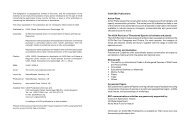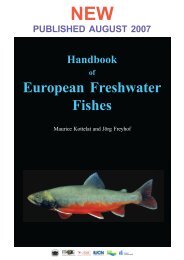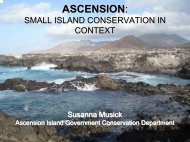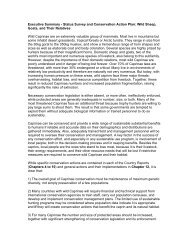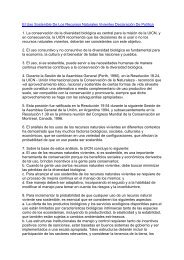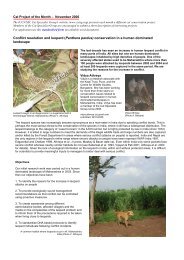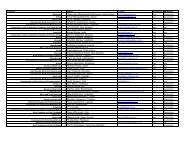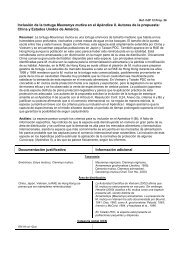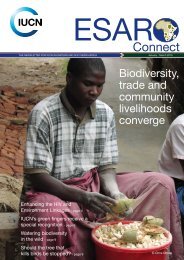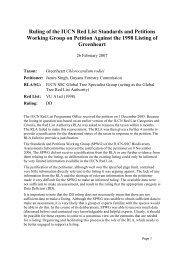Planning education to care for the earth - IUCN Knowledge Network
Planning education to care for the earth - IUCN Knowledge Network
Planning education to care for the earth - IUCN Knowledge Network
You also want an ePaper? Increase the reach of your titles
YUMPU automatically turns print PDFs into web optimized ePapers that Google loves.
<strong>Planning</strong> <strong>education</strong> <strong>to</strong> <strong>care</strong> <strong>for</strong> <strong>the</strong> <strong>earth</strong>Fourth, signs would be replaced by a training and incentive programme <strong>for</strong>sales staff at <strong>the</strong> concession stand. They would be trained <strong>to</strong> provide a simpleverbal cue <strong>to</strong> every cus<strong>to</strong>mer buying a recyclable cup <strong>to</strong> instruct, remind, andthank people <strong>for</strong> recycling that cup. Staff could be given a small financialreward every day <strong>the</strong> recycling goal was met.ConclusionEnvironmental <strong>education</strong> must give people <strong>the</strong> cognitive <strong>to</strong>ols <strong>to</strong>judge what is environmentally sound. The knowledge that serves as<strong>the</strong> basis <strong>for</strong> environmental practices and policies changes rapidly asscience progresses. People must be educated <strong>to</strong> assess newdevelopments and integrate <strong>the</strong>m in<strong>to</strong> <strong>the</strong> broad context.At <strong>the</strong> same time, environmental social marketing must give people<strong>the</strong> behavioural experience that environmental change is not onlypossible but can be positive and beneficial <strong>for</strong> <strong>the</strong>m <strong>to</strong>day, as well as<strong>for</strong> <strong>the</strong> future.Development agents find increasingly complex <strong>the</strong> job of helpingcommunities <strong>to</strong> decide how best <strong>to</strong> protect <strong>the</strong> environment and at <strong>the</strong>same time assure benefits now. The choice of a comprehensiveframework <strong>for</strong> behavioural change gives <strong>the</strong>se managers a moreaccurate idea of <strong>the</strong> perceptions of individuals and communitiesconcerning <strong>the</strong> alternatives proposed.Lessons learnedThe most important lesson we have learned about <strong>education</strong> is thatmost people are very smart and have excellent reasons <strong>for</strong> doing eventhose things which seem <strong>the</strong> most self-destructive <strong>to</strong> outsiders. Tohelp people protect <strong>the</strong> environment we must understand, respect andutilize <strong>the</strong>ir worldview and <strong>to</strong> offer “benefits” <strong>the</strong>y <strong>care</strong> about, reduce“barriers” <strong>the</strong>y worry about, and compete aggressively with <strong>the</strong>harmful behaviours <strong>the</strong>y now practice.Six steps <strong>to</strong> behaviour change1. Observe behaviour.Identify what people are doing, what <strong>the</strong>y like and don’t likeabout it. Who does it and who doesn’t. Don’t just askquestions. Look, count, record behaviour. Arrange <strong>for</strong> a fewpeople <strong>to</strong> do what you want <strong>the</strong> whole community <strong>to</strong> do.Watch <strong>the</strong> problems <strong>the</strong>y have and note <strong>the</strong> things <strong>the</strong>y seem<strong>to</strong> like.18



